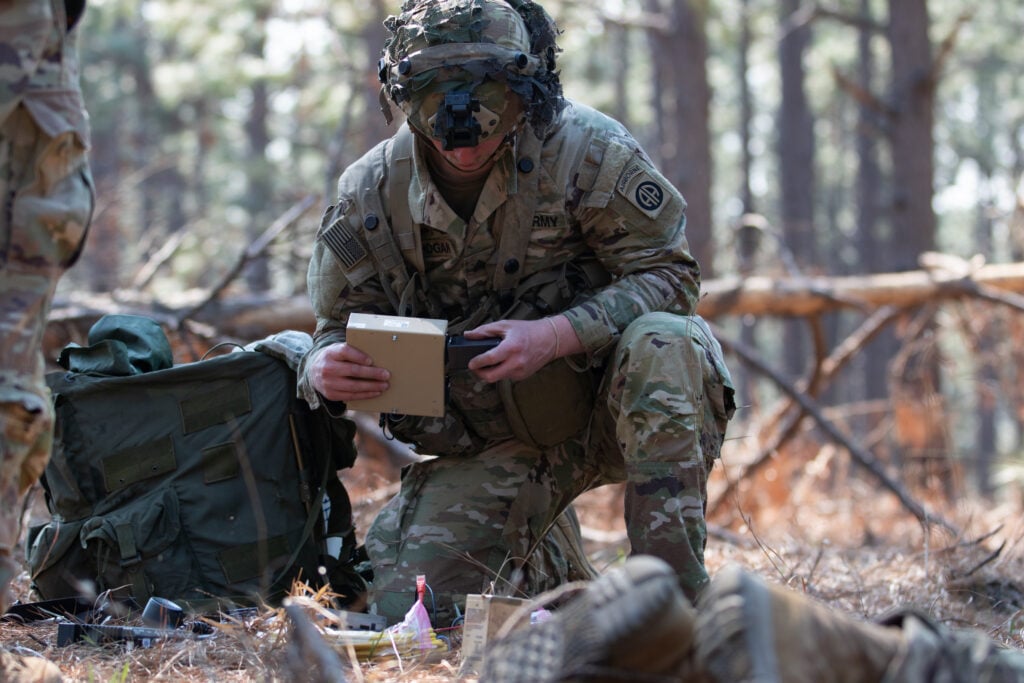By SYDNEY J. FREEDBERG JR.

WASHINGTON: Despite cuts to Army modernization writ large, funding to upgrade battlefield networks is up 25 percent in the service’s 2022 budget request, rising $537 million to a total of $2.7 billion. That’s more money than requested for any of the Army’s other modernization priorities, said the Army’s acting assistant secretary for acquisition, Doug Bush, in remarks to industry this morning.
The Army has six broad priority areas, and the network is, nominally, number four. It comes in after long-range missiles & artillery, ground combat vehicles, and high-speed aircraft. But the ability to share tactical data securely over long distances is essential to all types of forces, especially long-range artillery, which must engage distant targets spotted not by their own sensors but by drones, satellites and forward observers.
Another reason for the big network spend is that while new missiles, vehicles, and aircraft are largely in prototype, the Army is already buying new network tech in bulk. It’s currently fielding an upgrade called Capability Set 21 to light infantry units, with further upgrades for other forces scheduled for 2023, 2025 and 2027.
“What we’re already fielding with Capability Set 21 moves the Army to a whole other level,” Bush told this morning’s network Technical Exchange Meeting. In particular, added the program executive officer for command, control, & communications – tactical (PEO-C3T), Brig. Gen. Robert Collins, there’s a big focus on communicating and surviving in the face of a high-end threat like Russia or China:.That means signals that are harder for the enemy to detect, jam and locate the source of so they can bombard the transmitting unit.
Army officials provided a partial breakdown of that $2.7 billion request in an email to Breaking Defense:
The lion’s share of the money went to PEO-C3T, which procures network equipment, with the tactical network program overall rising from almost $1.8 billion to almost $2.3 billion.
Handheld radios got a $218 million increase, much of it for Capability Set 21 upgrades to the infantry.
An $89 million increase went to Tactical Network Transport (TNT), modernizing the backbone of unit-wide command networks.
An additional $52 million went to a new-start effort called Low Cost Tactical Radio Replacement, which buys an affordable replacement for the Army’s vast stocks of analog SINCGARS radios.
And $32 million goes to another new start, Tactical Communication Components, which buys everything from Link-16 radios to software support and technical data for Capability Set 21.
But modernizing the tactical network – brigades, battalions, and below – is not enough, added the Army’s deputy chief of staff for communications (G-6), Lt. Gen. John Morrison. You also need to modernize at the strategic and tactical levels as well – division, corps, and above. There’s still an “artificial divide,” he said, between the tactical network, which deploys with combat units, and the enterprise network, which is installed at permanent installations to serve higher headquarters. In a future All-Domain Operation covering vast distances over land, air, sea, space, and cyberspace, Morrison said, information must pass swiftly and seamlessly from the highest headquarters to the lowest.
The Army recently approved its first formal requirement for a “unified network” combining tactical and enterprise levels, Morrison said. (This requirement goes by the unwieldy name Unified Network Operations Information Systems Initial Capabilities Document). “You will see a significant shift” in how the Army acquires network equipment “as early as next year,” he said.
No comments:
Post a Comment